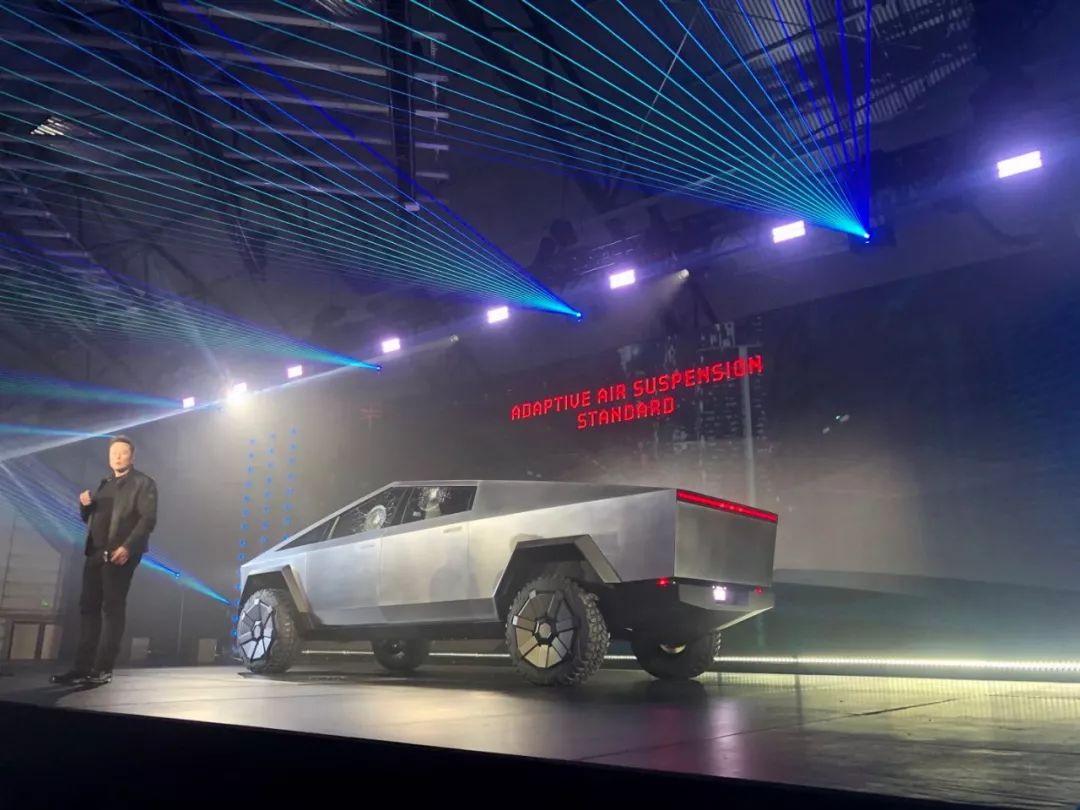On November 22, 2019 at 12:00, at Tesla’s design center in Hawthorne, California, USA, Tesla CEO Elon Musk officially announced the Cybertruck, Tesla’s fist product as a US car manufacturer.
Tesla Cybertruck: A Mars Pickup
Note that we’re not joking about Mars. Take a look at the explosive design of the Tesla Cybertruck.
This is not a concept car. It will officially enter mass production in 2021.
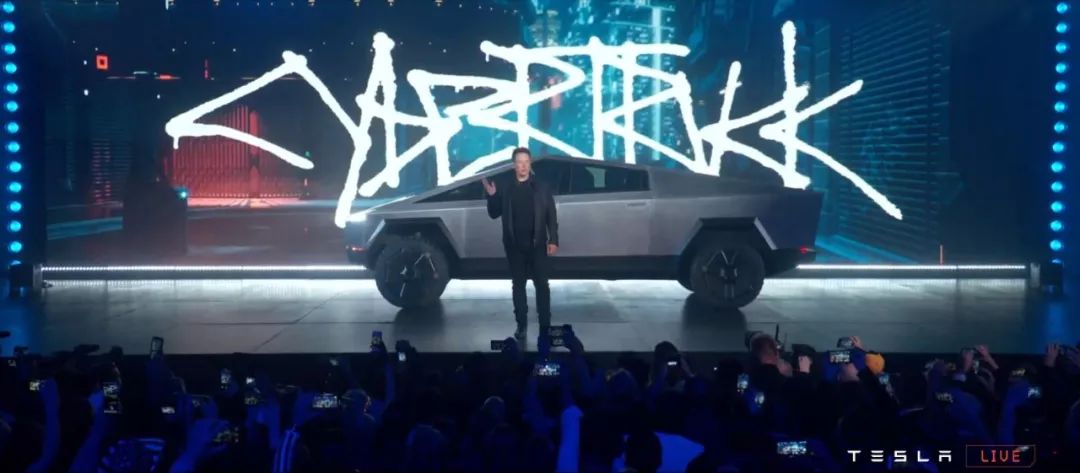
Tesla changed the low wind resistance design of the pickup truck and used smooth and flowing lines to create a high-performance sports car family design. An extreme 180-degree turn was made, resulting in the sharp and fierce steel straight male engineering aesthetics. Had Franz von Holzhausen not been present throughout the process, I would have guessed that Tesla’s chief designer had changed.
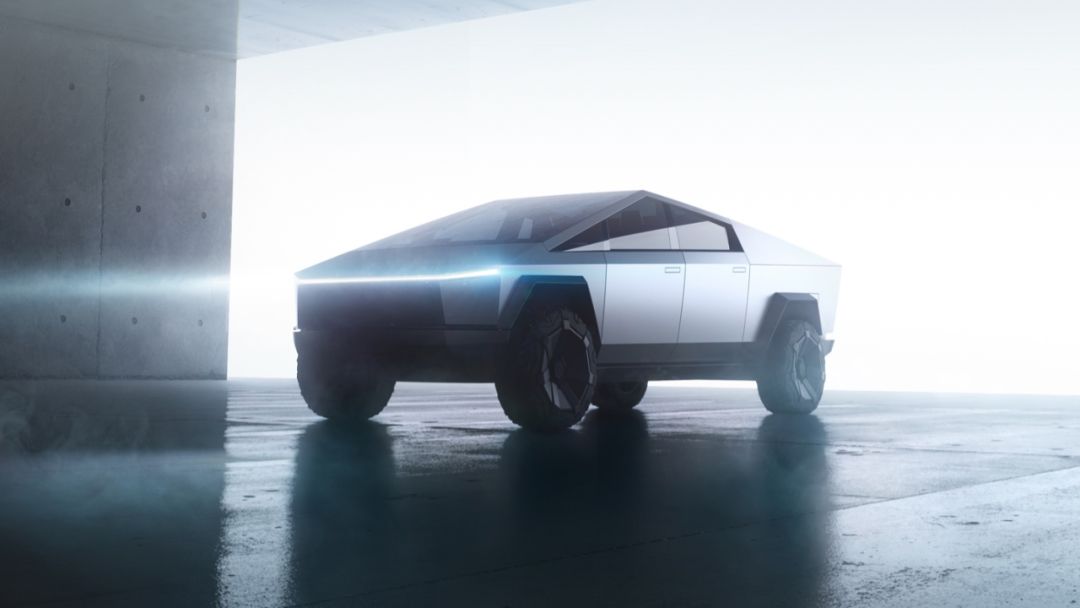
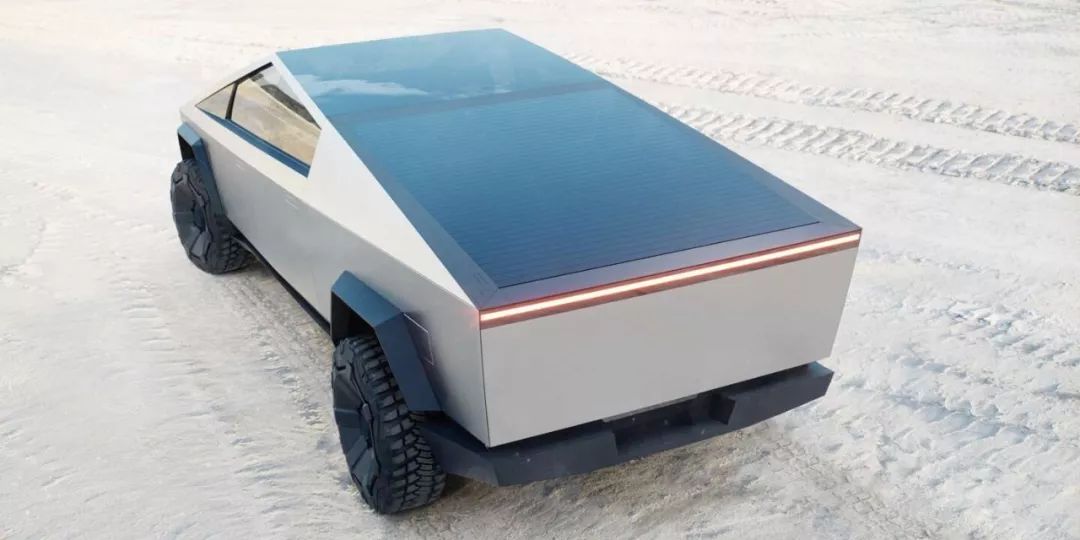
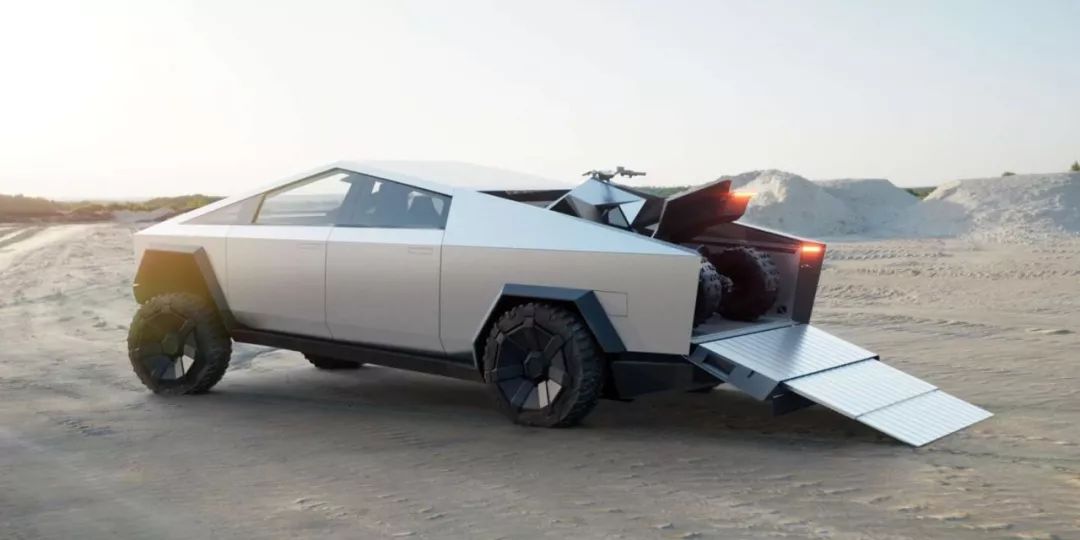
The interior is still Tesla, but you can see some Cybertruck elements from the steering wheel and seat design. The center console screen has increased from 15 inches in the Model 3 to 17 inches. The seat layout is a six-seat double-row design.
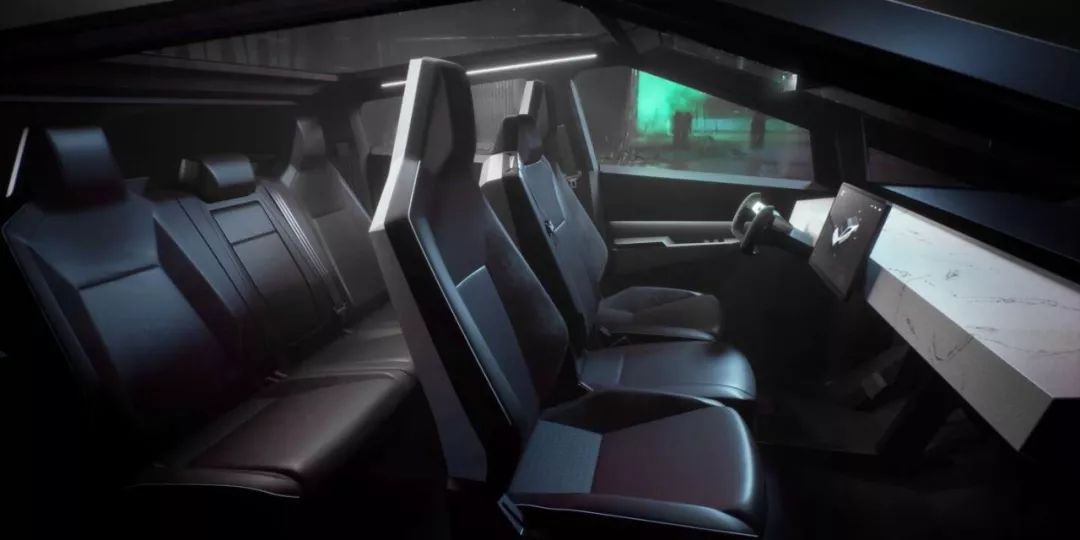
The Tesla Cybertruck has three versions, and the basic configuration and prices are as follows:
-
Single-motor rear-drive: EPA range of 250 miles (400 km), 0-60 mph acceleration in 6.5 seconds, top speed of 176 km/h, price of $39,900.* Dual-motor all-wheel drive version: EPA range of 300 miles (480 km), 0-60 mph acceleration in 4.5 seconds, top speed of 192 km/h, priced at $49,900.
-
Tri-motor all-wheel drive version: EPA range of 500 miles (800 km), 0-60 mph acceleration in 2.9 seconds! Top speed of 208 km/h, priced at $69,900.
Of course, what most people are interested in is the aggressive design. Before the start of the launch event, Elon mentioned that the armored version of the Tesla Cybertruck will serve as the official vehicle for landing on Mars.

In my opinion, the Tesla Cybertruck is the perfect embodiment of Elon’s post-apocalyptic fantasy. This kind of fantasy could already be seen faintly in Tesla’s previous products, such as the “Bioweapon Defense Mode” in the Model S/X and the nuclear explosion-proof windshield of the Tesla electric SemiTruck.
After reading the introduction to the Cybertruck body and windows on Tesla’s official website, we will have a deeper understanding of this product. “Almost impenetrable, this is the best material we can find.” According to Elon, the Cybertruck body can resist 9mm bullets. Tesla claims that the body of the Cybertruck is made of ULTRA-HARD 30X cold-rolled stainless steel.
Does it look familiar? The Starship spacecraft under construction by Space X uses the exact same material as the Cybertruck body. The Starship is planned by Space X to replace the Falcon 9 as the company’s main rocket in 2021 and land on Mars in 2022.
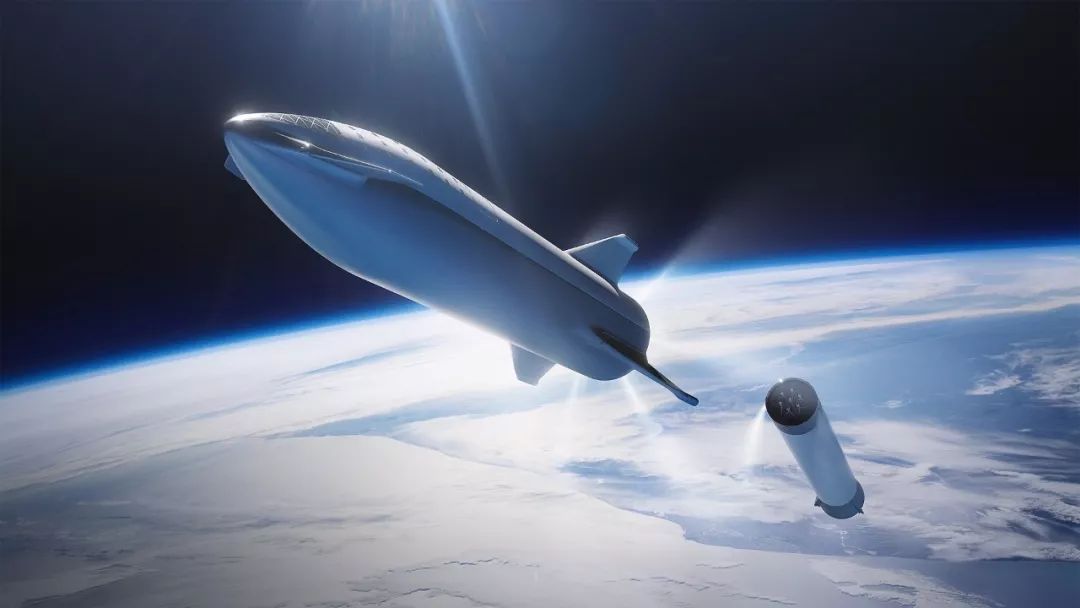
So, what was the origin of the Tesla armored glass that failed the demonstration during the launch event?
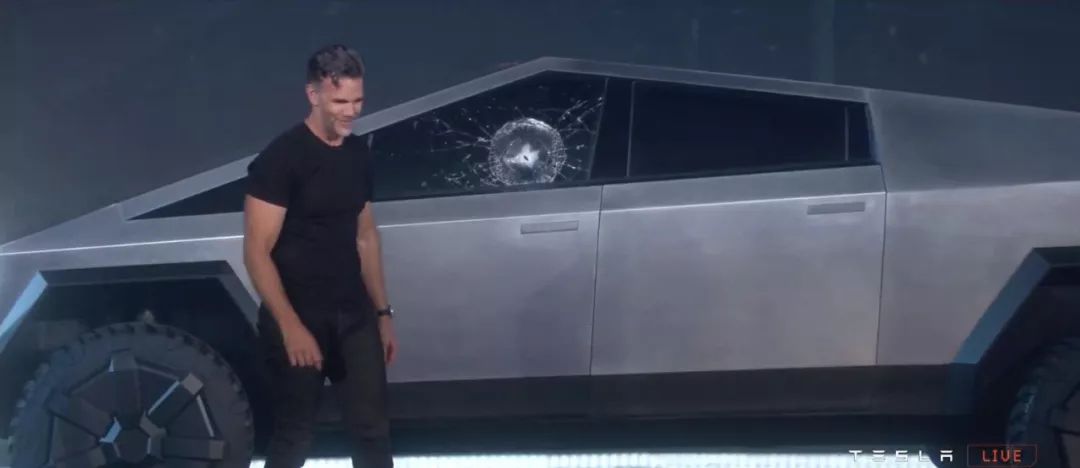 In May 2014, Elon recruited Lawrence Berkeley National Laboratory physicist Rosie Mottsmith to his team. Initially, she was responsible for the destructive testing of Tesla’s armored glass, testing all the items that could possibly fall from the front of the car, from rocks to tires, for the damage to the front windshield. And Elon’s task for her was: “In addition to potential accidental injuries, Tesla’s armored glass must have defensive capabilities against attacks.”
In May 2014, Elon recruited Lawrence Berkeley National Laboratory physicist Rosie Mottsmith to his team. Initially, she was responsible for the destructive testing of Tesla’s armored glass, testing all the items that could possibly fall from the front of the car, from rocks to tires, for the damage to the front windshield. And Elon’s task for her was: “In addition to potential accidental injuries, Tesla’s armored glass must have defensive capabilities against attacks.”
Months later, Rosie’s team independently developed a cannon that can conveniently load various projectiles for destructive testing of Tesla’s armored glass against bombardment.
The final result is that Tesla’s armored glass mounted on the Tesla SemiTruck and Cybertruck pickup can defend against aggressive weapons to a certain extent.
Therefore, this is not a joke, it is indeed the Cybertruck of Mars.
An inconceivable concept car
After the launch event, let’s talk about the background of the birth of Tesla Cybertruck.
In September 2015, the former chairman and CEO of BMW Group Harald Krueger said that Model X is “just a concept car,” and Jochen Rudat, Tesla’s European sales director next to him, reminded him that Model X has already started delivery in the United States. In Tesla’s concept, there is no “concept car”.
So what about Tesla Cybertruck? To be honest, before the start of the launch event, I had similar concerns as Harald Krueger.
After Tesla announced the launch date, Tesla’s independent director and Elon’s brother Kimbal Musk said that Tesla Cybertruck is the most exciting product for Tesla since Model S, and it will definitely make you stunned. Elon’s mother Maye Musk reposted and said, me too:)
So, what did Elon say himself before the launch event?> It’s gonna be like a really futuristic-like cyberpunk, Blade Runner pickup truck. It’s gonna be awesome, it’s gonna be amazing, this will be heart-stopping.
Ta will be a truly futuristic cyberpunk pickup truck, like the pickup truck in “Blade Runner” – awesome, amazing, heart-stopping……
Most importantly, he added a sentence: “If this avant-garde design is not successful commercially, he will consider producing a ‘more traditional pickup truck’ in the future.”
This makes me worried: after the global success of Model 3, will the strong and powerful Elon be obsessed with his concept designs and compromise the tooling properties of the pickup truck product?
The result is that everyone has seen it. In the premise of Elon fully unleashing his avant-garde and even sci-fi “design bacteria”, Tesla Cybertruck still achieves total product power that leads the same level models.
7-year wish come true, the real battle begins
As we all know, Tesla’s pure electric semi-trailer truck was inspired by a conversation between Elon and Tesla’s business chief, Jerome Guillen. What about Tesla Cybertruck?
On December 27, 2017, when responding to netizens, Elon revealed that the core design and engineering elements of Tesla pickup truck had been polished in his mind for five years, and he couldn’t wait to create a pickup truck.
“Polished for five years”, is this another marketing skill innate in Elon?
The Internet has a memory. On August 1, 2012, when Tesla was deeply mired in Model S production capacity hell, Elon first revealed his idea of creating a Tesla super pickup truck to the public.After 7 years, Tesla’s team grew from 2,964 in 2012 to 48,817 in 2019, and evolved from a startup with only one mass-produced vehicle and precarious financial situation, to a leader in the intelligent electric vehicle market with three mass-produced vehicles launching in global markets and an exciting product roadmap.
Today, Elon’s long-standing dream has finally come true.
However, why 2012 and why a pickup truck? A brutal fact is that “Tesla has never truly threatened the traditional American automotive giant in the past 7 years”.
Over the past 7 years, Tesla’s sales have grown from 30 vehicles in 2012 to 245,000. But “in the U.S. market, most people have no conception of the pickup truck’s dominance in the American light vehicle market”.
Guided by Tesla, the growth of pure electric vehicle sales in the U.S. market has led the world market. But for 7 consecutive years, the Ford F-series pickup truck has led the U.S. pure electric vehicle market with even greater growth, enjoying an absolute advantage.
In fact, the Ford F-series pickup truck has been the best-selling vehicle in the United States for 42 consecutive years since 1977. Its sales in 2018 reached an unprecedented 900,000, more than three times the global annual sales of all Tesla models.
On the sales charts of the U.S. light vehicle market, the Ford F-series, FCA’s Ram pickup trucks and Chevrolet Silverado pickup trucks have dominated the top three for two consecutive years with sales of at least 500,000 vehicles.
In contrast, the U.S. sedan market, where the Model 3 is located, has experienced five consecutive years of decline since 2014. Under the squeeze of the Japanese low-cost family cars and the Tesla Model 3, General Motors, Ford, and FCA’s sedan businesses are continuously shrinking their front lines, putting more energy into dominating the profit and market share of the SUV/pickup truck business.
Over the past 7 years, while Ford and FCA have expanded their pickup truck business, Tesla has been fighting in the declining stock car market.Today, the two sides finally met face-to-face in the most important and core battlefield, the pickup truck market. One is a traditional giant with a long history and deep accumulation, and the other is a product guided by first-principles thinking, starting from scratch with no record of defeats.
We have been looking forward to a real, head-to-head competition.




This article is a translation by ChatGPT of a Chinese report from 42HOW. If you have any questions about it, please email bd@42how.com.
